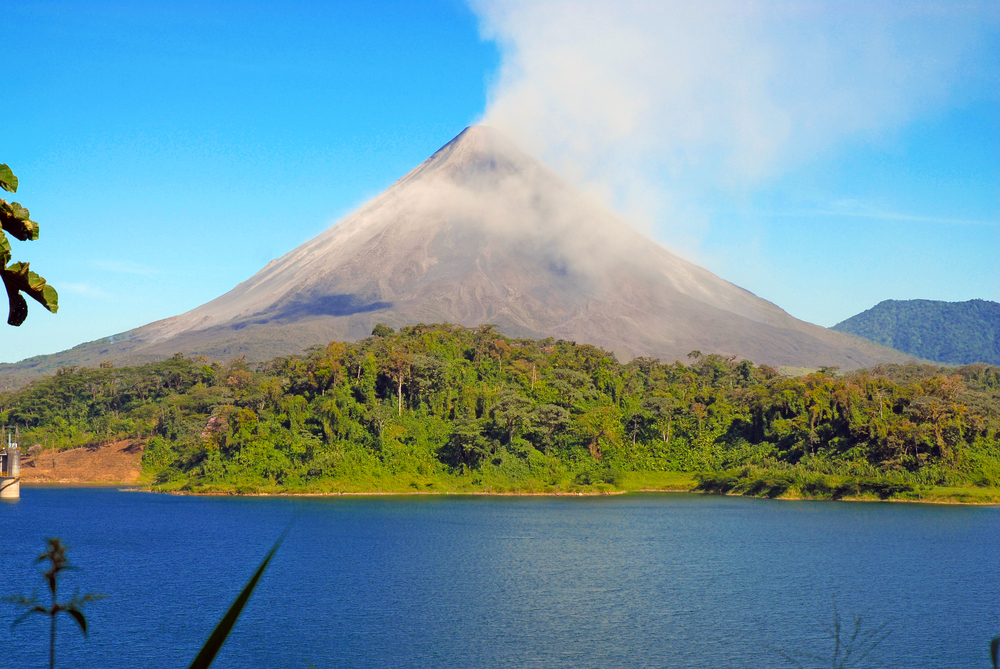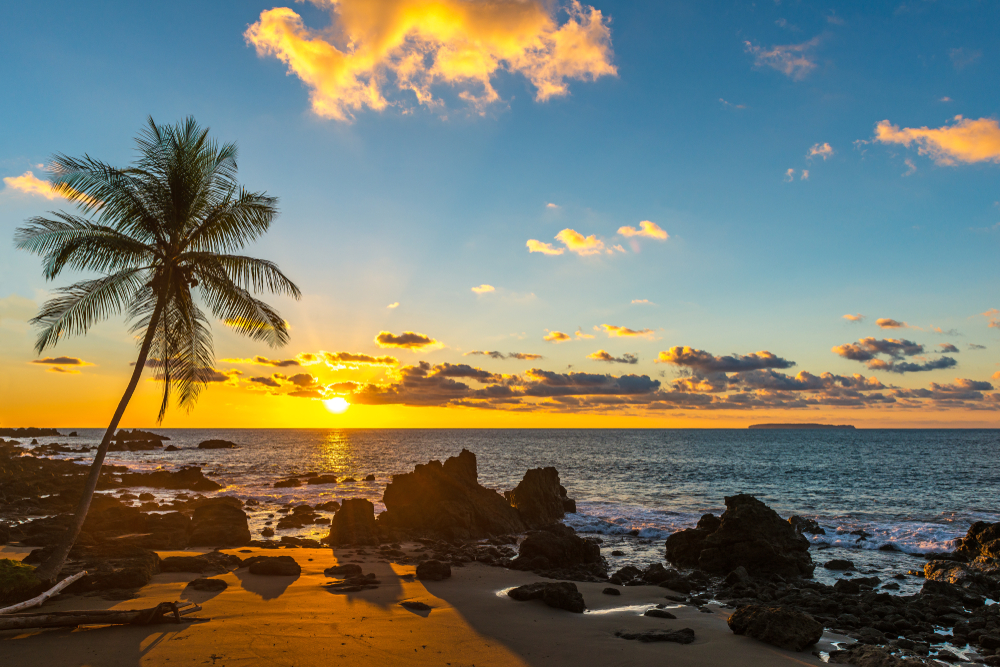Ballena Marine Overview
Ballena Marine National Park, or Parque Nacional Marino Ballena in Spanish, is a remarkable coastal and marine protected area located along Costa Rica’s southern Pacific coast, in the Puntarenas Province near the town of Uvita.
Covering approximately 43.5 square miles (113 square kilometers), the park is best known for its pristine beaches, vibrant coral reefs, and the iconic whale tail-shaped sandbar formation at Punta Uvita, which is visible during low tide.
This park is named after the humpback whales that migrate to its warm waters annually, making it one of the best places in the world to witness these majestic marine mammals up close.
The park’s terrain is a mix of coastal and marine environments, with golden sandy beaches, rocky outcrops, and a series of small islands and islets scattered offshore. The most prominent geographical features include Punta Uvita Tombolo, a natural sand and rock formation resembling a whale’s tail, and Isla Ballena, which serves as an important nesting site for seabirds.
The park also protects a rich underwater world with extensive coral reefs and marine ecosystems, supporting a diversity of marine life. Inland, the park features tropical rainforest vegetation along its shoreline, where mangroves and coastal forests provide essential habitats for a variety of wildlife.
Wildlife in Ballena Marine National Park is dominated by marine species, with humpback whales being the most famous attraction. These whales migrate to the region from both the northern and southern hemispheres, creating two distinct whale-watching seasons, from December to April and again from July to November.
The park is also home to dolphins, including bottlenose and spotted dolphins, which can often be seen playing in the waves. Sea turtles such as the olive ridley, hawksbill, and green sea turtles visit the park’s beaches to nest. Among the bird species found here, frigatebirds, brown pelicans, and white ibis are commonly spotted soaring over the ocean, while shorebirds forage along the coastal areas.
One of the most popular features of the park is the opportunity to witness the humpback whale migration, drawing visitors from around the world. Whale-watching tours are a major highlight, providing an unforgettable experience of seeing these massive creatures breaching and tail-slapping in the open water.
Snorkeling and scuba diving are also popular activities, allowing visitors to explore the park’s coral reefs teeming with colorful fish, sea stars, rays, and even small reef sharks. Kayaking and paddleboarding offer another way to experience the park’s coastal beauty, while boat tours take visitors around the islands to spot dolphins and other marine life. On land, visitors can enjoy walking along the pristine beaches, exploring the lush coastal rainforest, or simply relaxing and taking in the breathtaking scenery.
Conservation efforts at Ballena Marine National Park have been crucial in protecting its diverse marine and coastal ecosystems. The park was established in 1989 to safeguard the area from unchecked development, overfishing, and pollution, ensuring that its fragile coral reefs, marine life, and whale populations remain intact.
While conservation successes include the protection of key nesting sites and marine habitats, challenges such as illegal fishing, climate change, and plastic pollution continue to threaten the park’s biodiversity.
Efforts by park authorities and local conservation organizations aim to promote sustainable tourism and environmental education to mitigate these threats and preserve this natural treasure for future generations.












































































